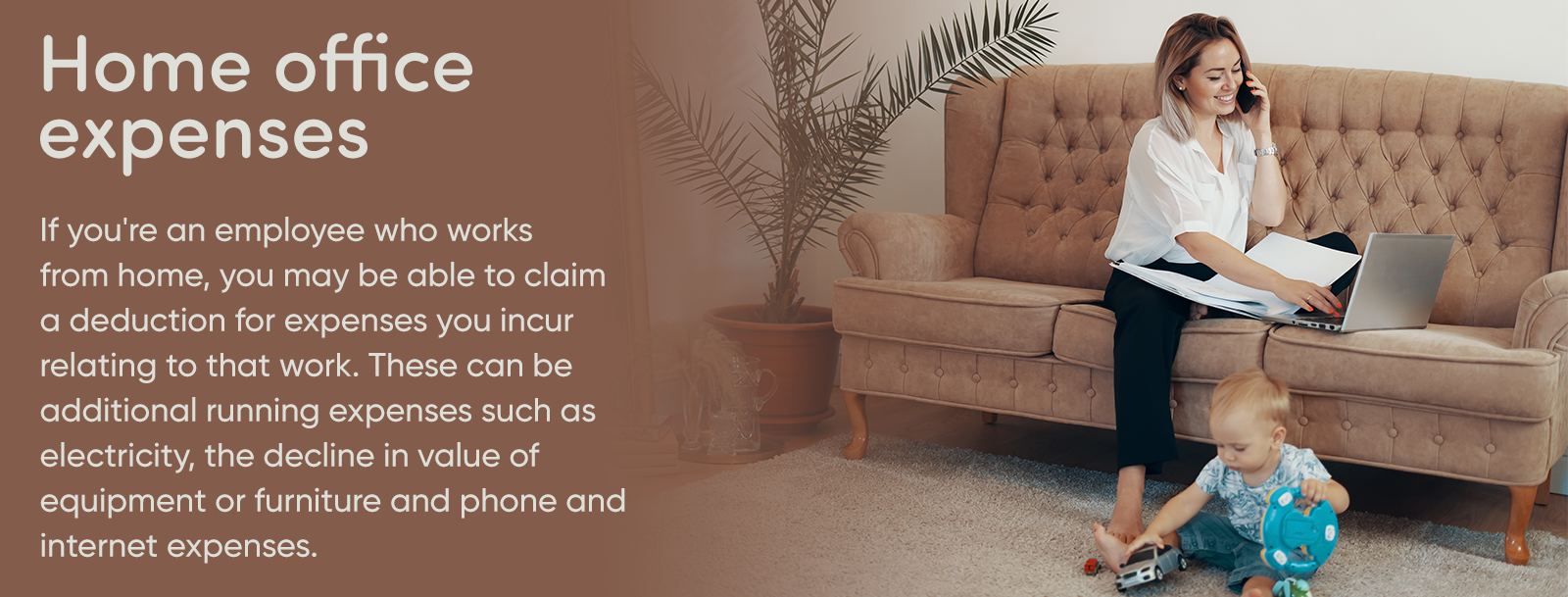Home office expenses
Take advantage of small business concessions
June 25, 20205000 VIC grant under Business support fund expansion
July 14, 2020
If you’re an employee who works from home, you may be able to claim a deduction for expenses you incur relating to that work. These can be additional running expenses such as electricity, the decline in the value of equipment or furniture and phone and internet expenses.
If your home is your principal place of business, you should refer to running your business from home.
Calculation methods
There are three ways of calculating home office expenses depending on your circumstances. The methods are the:
Shortcut method (80 cents) – only available 1 March to 30 June 2020
The shortcut method covers all of your work from home expenses, such as:
- phone expenses
- internet expenses
- the decline in value of equipment and furniture
- electricity and gas for heating, cooling, and lighting.
You don’t need to have a dedicated work area to use this method. However, you must keep a record of the number of hours you have worked from home. This could be a timesheet, roster, a diary or documents that set out the hours you worked from Home
Fixed-rate method (52 cents)
You can claim a deduction of 52 cents for each hour you work from home for then work-related expenses you incur for additional running expenses.
The fixed-rate covers all expenses you incur for:
the decline in value of home office furniture and furnishings – for example, desk electricity and gas for heating, cooling, and lighting the cost of repairs to your home office equipment, furniture, and furnishings.
To claim using this method, you must keep records of either:
your actual hours spent working at home for the year a diary for a representative four-week period to show your usual pattern of working at home.
This method will give you the opportunity to claim Phone, Internet, computer consumables and decline in value of equipment such as Laptops etc, however, to use this method you need to have a dedicated area when working from home.
Actual cost method
Under the actual expense’s method, you can claim the additional running costs you directly incur as a result of working from home. This may include the following
expenses:
- electricity and gas for cooling, heating and lighting
- the decline in value of home office furniture (desk, chair) and furnishings,
- the decline in value of phones, computers, laptops or similar devices
- phone expenses
- internet expenses
- cleaning (if you use a dedicated area for working)
- computer consumables and stationery – such as ink
For more information on how to claim these expenses and to get the best tax advice contact us today.

